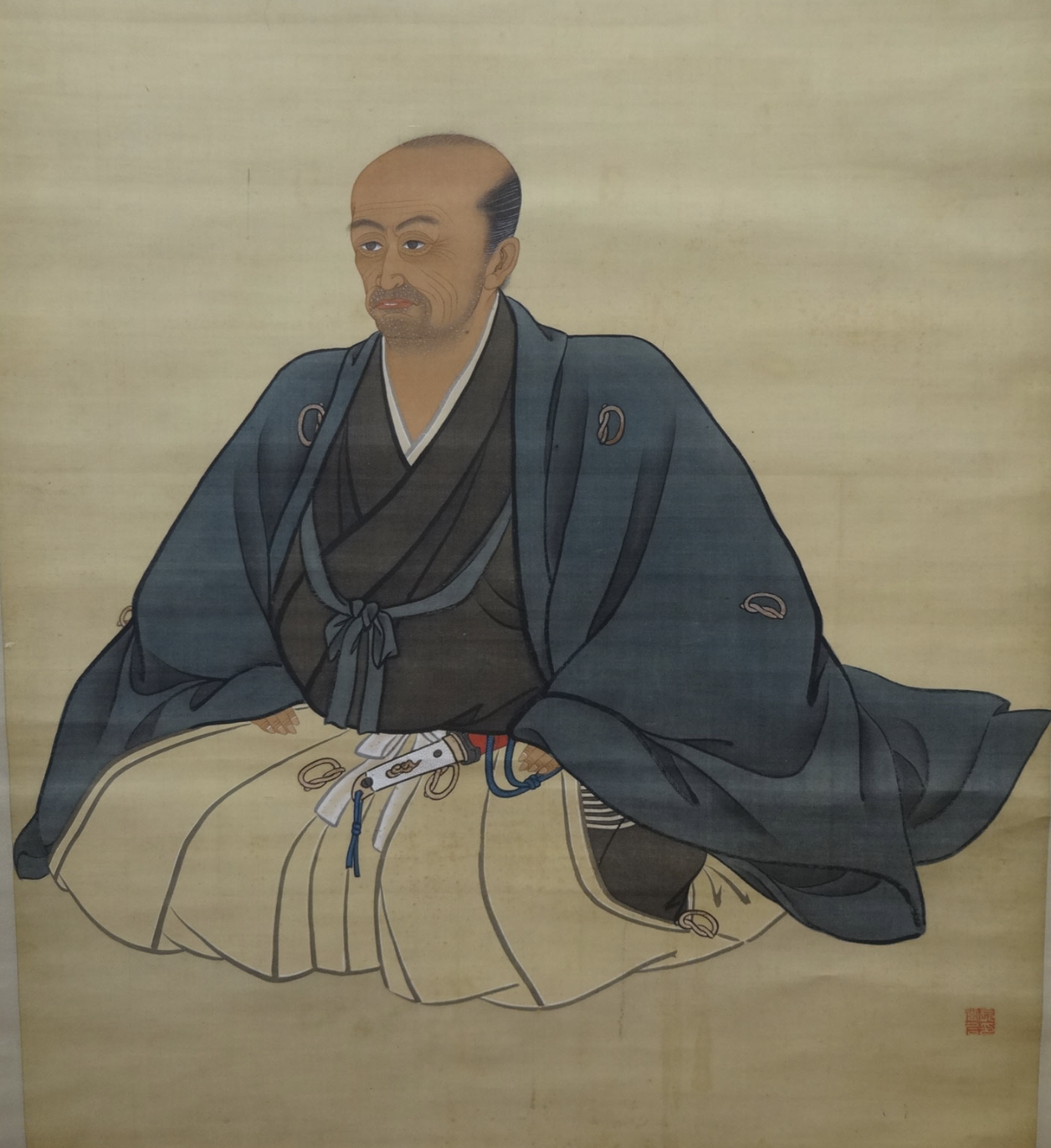

October 23, 1760 – 1835
華岡青洲 Seishu Hanaoka
The First Pioneer of General Anesthesia Surgery in the World
Hanaoka Seishu was a doctor active during the Edo period. While studying Chinese herbal medicine, he also mastered Dutch-style surgery and other cutting-edge medical techniques. After repeatedly mixing various medicinal herbs, he perfected the anesthetic “Tsusensan,” composed mainly of mandarage (datura alba) berries and other ingredients.
In 1804, he succeeded in performing the world’s first general anesthesia operation to remove breast cancer. It was about 40 years after Seishu’s successful operation that the first general anesthesia was performed in Europe and the U.S. In 1846, a general anesthesia operation using ether was successfully performed in the United States.
It must not be forgotten that behind such great achievements were his wife, who lost her eyesight, and his mother, who lost her life in cooperation with human experimentation.
Why Hanaoka Seishu Pursued the Development of Anesthetics
Born on October 23, 1760, as the eldest son of a medical practitioner father in present-day Wakayama Prefecture, Hanaoka Seishu embarked on a journey of medical exploration. In 1782, at the age of 23, he set forth for Kyoto, a bustling hub of medical scholarship alongside Edo and Nagasaki, where numerous distinguished medical experts congregated.
Upon encountering reports of rare diseases or unique cases, Seishu eagerly sought opportunities to observe and study the treatments, delving into the distinctive characteristics and advantages of each medicinal approach. His passion for learning was particularly fueled by Dokushouan Nagatomi’s “Manyu zakki.” Within its pages lay a description of breast cancer treatment practiced in Europe, a procedure yet unknown in Japan.
At this time, it was believed that cutting the breast large enough to cure breast cancer radically would be impossible without solving the excruciating pain the patient would suffer. That is why he considered the perfection of anesthesia as the most important issue to advance the medical treatment of cancer.
It’s worth noting that the earliest documented case of cancer dates back to approximately 2600 BC, as discovered by the Egyptian physician Imhotep. He described a large mass in one’s chest that would not heal no matter what he did. The ancient Greek physician Hippocrates described breasts as red and swollen and “like crabs (cancer),” which is the origin of the word “cancer.” Cancer came to be called “gan” in Japanese because Seishu recorded that the tumor was as hard as a rock, and rocks are also pronounced “gan” in Japanese.
Toward the Perfection of Anesthesia: The Sacrifices of His Mother and Wife
In 1785, after three years of studying in Kyoto, he returned to his hometown. He took over the family business and began working on developing an anesthetic while treating patients.
His focus centered on the datura alba flower, known for inducing unconsciousness upon ingestion. Although it was said that datura alba flowers would kill a person if consumed, he continued his research, believing they could be used as medicine, not poison, depending on how they were used.
Following rigorous animal trials, he eventually achieved success in refining the anesthetic. However, just prior to human experimentation, he encountered a daunting obstacle. It was then that his mother and wife volunteered to serve as test subjects, offering their bodies in a selfless bid to perfect the anesthesia. As a result of the experiment, his wife lost her eyesight and his mother became ill and later died.
Despite their sacrifices, he finally succeeded in developing the anesthetic “Tsusensan” around 1803. Indeed, two decades had elapsed since he first committed himself to the pursuit of anesthesia’s development.
The World’s First Breast Cancer Surgery Under General Anesthesia
During that era, the breast was deemed a woman’s vital point and a fatal weakness. Yet, Seishu held firm to his belief that through the use of anesthetics, even breast cancer could be conquered.
On October 13, 1804, he undertook the monumental task of operating on a 60-year-old breast cancer patient. The surgery was performed with the utmost caution. The general anesthesia with Tsusensan worked perfectly, and the surgeon succeeded in removing the cancerous tissue from the unconscious patient’s body.
After Pioneering Anesthesia Surgery, Seishu’s Legacy
After accomplishing this achievement, Seishu went on to perform various incision/amputation surgeries using anesthetics, which were conventionally considered difficult to perform before.
Countless people rushed to study medicine under him. Establishing a medical school near his residence, Seishu imparted invaluable wisdom to his disciples. He firmly believed that the segregation of internal medicine, surgery, Oriental medicine, Western medicine, and medical science hindered effective patient care. Instead, he advocated for a holistic approach, teaching his students that true mastery of medicine required familiarity with all disciplines.
Moreover, he made his disciples promise very strictly not to reveal the formulas of the prescriptions to anyone. The reason for this was to prevent anesthesia accidents by keeping the formulas secret. This rule exemplifies his philosophy of prioritizing patient safety and saving lives above all else.
The Decline of Hanaoka-Style Anesthesia
The world’s first general anesthesia method, which was a sensation at the time, has now disappeared. The primary reason for this is the several hours required for anesthesia induction. This made it impossible to meet the demands of emergency surgeries and field hospitals. In addition, this method only produced a shallow state of anesthesia. It could not meet the demands of later eras when anesthesia needed to be administered quickly and effects adjusted as desired. For these reasons, Seishu’s anesthesia method declined rapidly from the last days of the Tokugawa Shogunate to the Meiji Restoration
Nevertheless, his achievements were so great that it is said that without him, medical science would have been 50 years behind, and he is also praised for pioneering the use of experimental science in medicine. His achievements are honored in the International Surgical Society Honor Hall, located on the shore of Lake Michigan in Chicago, USA.
.
.
.




